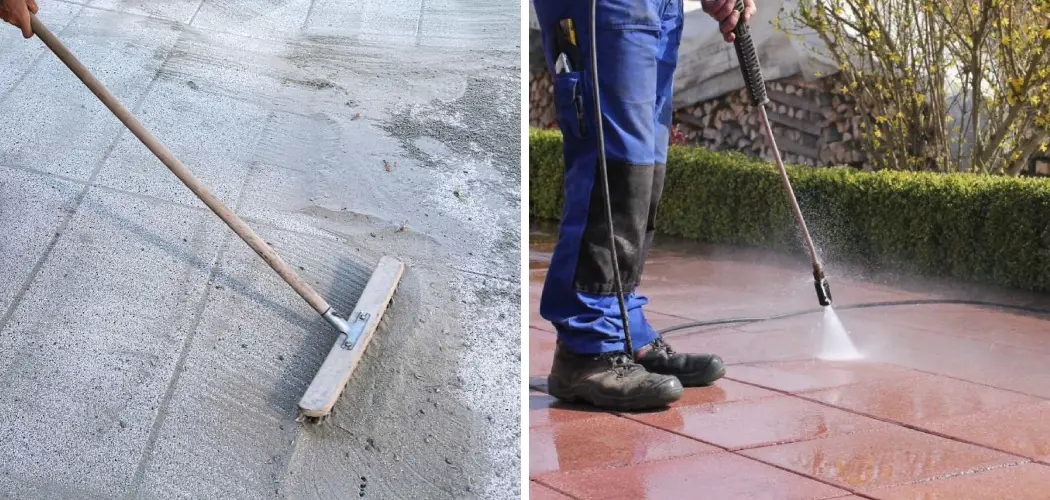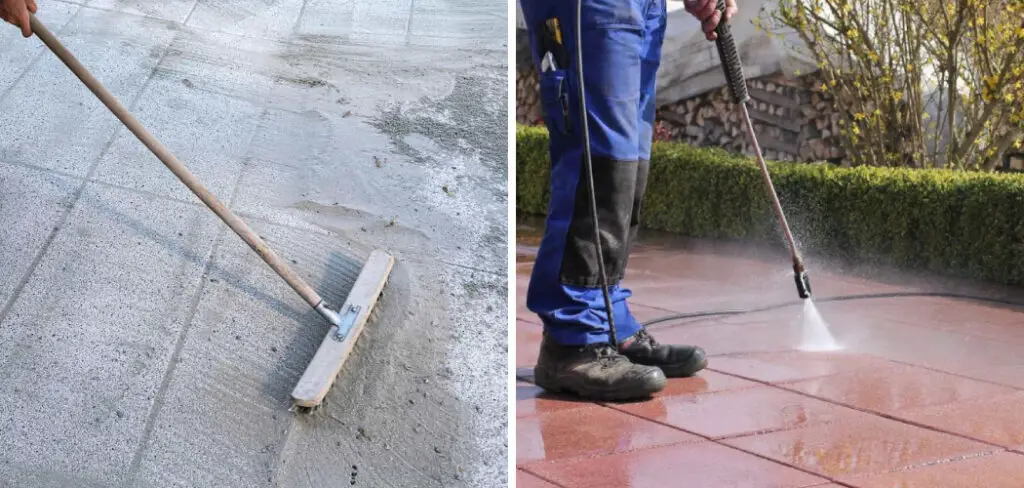
Are you dealing with a polymeric sand haze on your pavers? It can be a frustrating issue to deal with, as it can ruin the aesthetics of what should be a beautiful outdoor space. Fortunately, there are steps that you can take to remove the haze. Removing polymeric sand haze from pavers is crucial to keeping your outdoor area neat and attractive.
Polymeric sand, also known as jointing or paver sand, provides an ideal base between different pavers, but when the thin film that remains on the surface gets dried up, it can give your paved sections a dull and scruffy look.
There is no need to despair, though – with some clever techniques, you can easily get rid of this mess in no time and revive the beauty of your patio or walkway!
Read on to know how to remove polymeric sand haze from pavers.
What Will You Need?
To remove polymeric sand haze from pavers, you will need the following:
- A garden hose
- A stiff, bristled brush
- An old rag
- Glass cleaner (optional)
- Sealer (optional)
Once you have gathered these items, you can begin the process of removing polymeric sand haze from pavers.
10 Easy Steps on How to Remove Polymeric Sand Haze From Pavers
Step 1: Wet Down The Pavers
The first step in removing polymeric sand haze from pavers is wetting the area with a garden hose. Make sure to thoroughly spray the pavers so that no dry polymeric sand is left on the surface. Getting rid of as much dry sand as possible is important before attempting to scrub off the haze.
Step 2: Scrub The Pavers
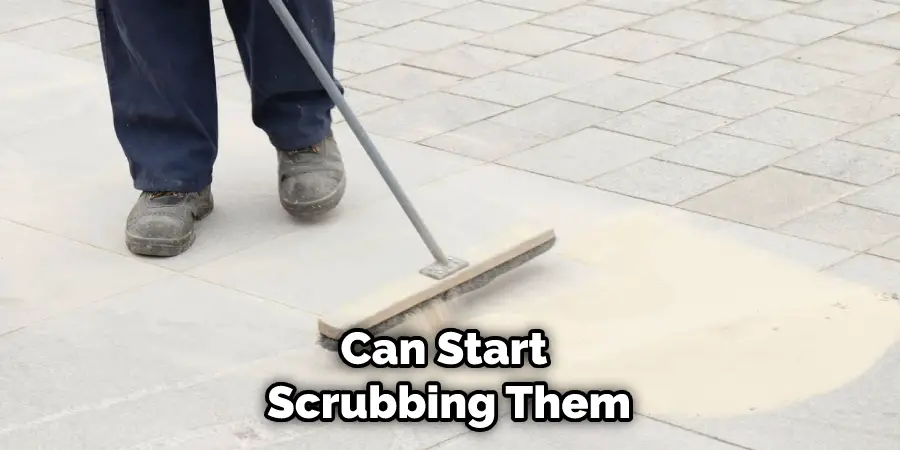
Once your pavers are wet with water, you can start scrubbing them with a stiff, bristled brush. This will help remove any remaining polymeric sand haze still clinging to the paver’s surface. Don’t be too harsh while scrubbing, as you don’t want to damage the pavers.
Step 3: Dry The Pavers
After you have finished scrubbing the pavers, make sure to dry them off completely using an old rag or towel. This will ensure that no moisture remains, which can cause further staining or damage to the pavers. Be careful not to rub too hard, as it might damage the pavers.
Because polymeric sand is very thin, removing all of its particles from the paver’s surface can be difficult.
Step 4: Clean The Pavers (Optional)
If necessary, you can use a glass cleaner to give your pavers an extra shine. Make sure to test the cleaner on a small area first before using it over the entire surface. Otherwise, you may end up with a patchy or discolored finish. You can also use a sealer to protect the pavers from future staining.
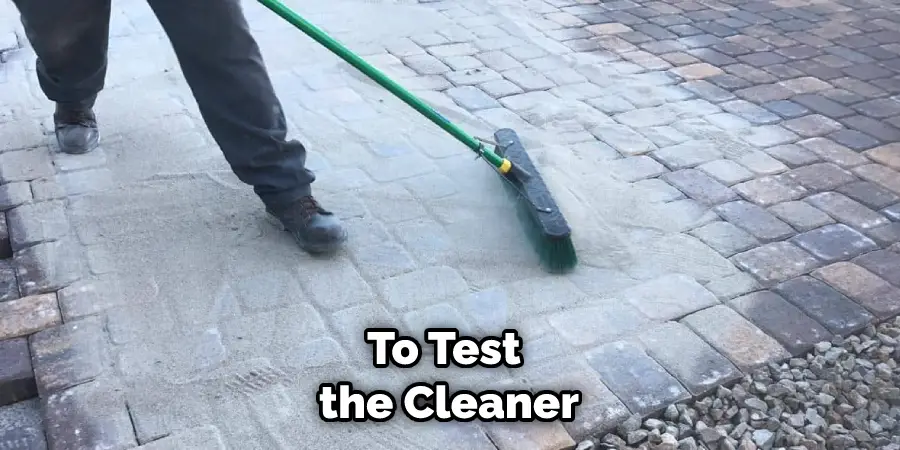
Step 5: Seal The Pavers (Optional)
If desired, you can apply a sealer to protect your pavers from future staining and damage. This step is especially recommended if you have used glass cleaner on your pavers, as this will help keep them looking clean for longer. If you decide to seal your pavers, make sure to read the manufacturer’s instructions carefully.
Step 6: Allow The Pavers To Dry Completely
Once you are done with all the steps mentioned above, it is important to allow your pavers to dry completely before using the area again. This will ensure that any residue or dust left behind gets washed away by the rainwater and won’t cause further problems down the line. You can also use a leaf blower to speed up the drying process.
Step 7: Reapply Polymeric Sand (Optional)
If you decide to reapply polymeric sand, make sure to use a high-quality product specifically designed for this purpose. Don’t forget to wet the pavers before applying the new sand and allow it to dry completely before walking on it. This will ensure that your pavers are firmly set in place and won’t move around due to foot traffic.
Step 8: Avoid Pressure Washing
When it comes to removing polymeric sand haze from pavers, pressure washing is not recommended. The high-pressure water could damage the pavers, particularly if they are made of soft materials such as brick or stone. If you must use a pressure washer, make sure to choose the lowest setting possible and only target small areas at a time.
Step 9: Seek Professional Help (Optional)
If your pavers have stubborn stains that won’t come off despite repeated scrubbing, consider seeking professional help. A professional cleaning service can remove any hard-to-remove stains and restore your pavers to their original glory in no time! They can also advise you on how to maintain and protect your pavers from future damage properly.
Step 10: Enjoy Your Clean Pavers
Now that you know how to do it, it’s time to appreciate the hard work you’ve put in! Admire your clean and beautiful pavers and enjoy the freshness of the newly applied sealer. With proper maintenance, these pavers should last for a long time, giving you years of enjoyment without worrying about staining or discoloration.
Following these steps, you can easily remove polymeric sand haze from your pavers and make them look new! With a bit of effort and patience, anyone can do their own paver maintenance without spending too much on professional services. So what are you waiting for? Get started today!
5 Additional Tips and Tricks
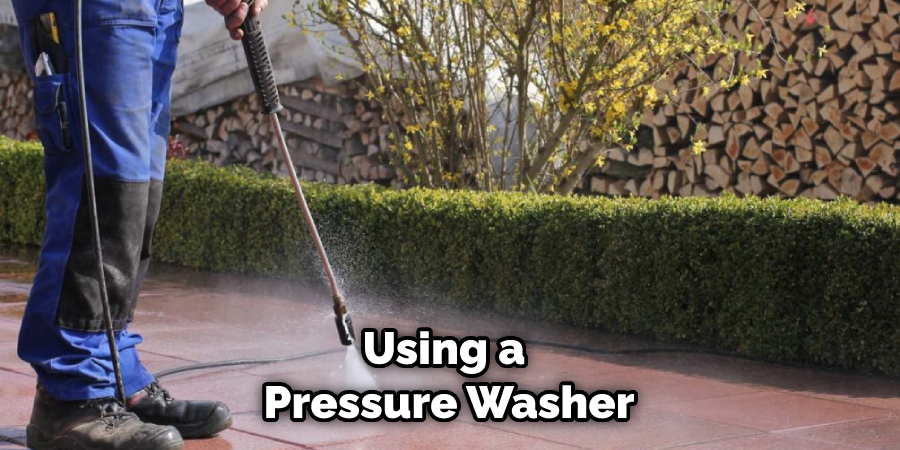
- Use a garden hose to rinse off the area. After using a pressure washer, use a garden hose to wash away any remaining particles of polymeric sand haze. Make sure to rinse thoroughly to get rid of all traces of it.
- Try using an air compressor if available. An air compressor can be used instead of a pressure washer or garden hose for removing polymeric sand haze from pavers in some cases, as long as it is used with care and caution!
- Use water only without detergents or chemicals when cleaning up the area after applying your polymeric sand. Detergents and chemicals can affect how the sand bonds to the pavers, so it is best to stick to a water-only approach when cleaning up.
- Allow enough time. This is especially important if you are using a pressure washer. If the pressure is too high, it could damage the pavers and remove any sealant that you may have applied to them.
- Consider using an absorbent material such as sawdust or kitty litter. If you have a particularly stubborn area of polymeric sand haze, consider using an absorbent material such as sawdust or kitty litter to help soak up any remaining moisture before attempting to remove it. This can help make the removal process much easier!
By following these tips and tricks, you can easily remove polymeric sand haze from your pavers with minimal effort. With a bit of patience and some elbow grease, you’ll be able to restore the beauty of your pavers in no time!
5 Things You Should Avoid
- Avoid cleaning products that contain strong acids or alkalis, including vinegar and bleach, as they may react with the polymeric sand, changing its color or causing it to become sticky.
- Avoid scrubbing the paver surface when removing polymeric sand haze. Scrubbing will only spread the haze further across the surface and may cause additional damage to the paver material.
- Avoid applying sealer before fully removing all traces of polymeric sand haze from your pavers – this will create an uneven finish once the sealer is applied.
- Avoid using pressure washers to remove polymeric sand haze from pavers, as it can cause long-term damage to the surface of the paver material.
- Avoid steam cleaning or high-pressure water blasting as these will likely set the polymeric sand into the crevices of the paver material and make it much more difficult to remove, if not impossible.
With the right technique, polymeric sand haze can be removed from pavers without damaging the surface or requiring a costly professional cleaning. Follow these tips on properly and safely removing polymeric sand haze from your pavers.
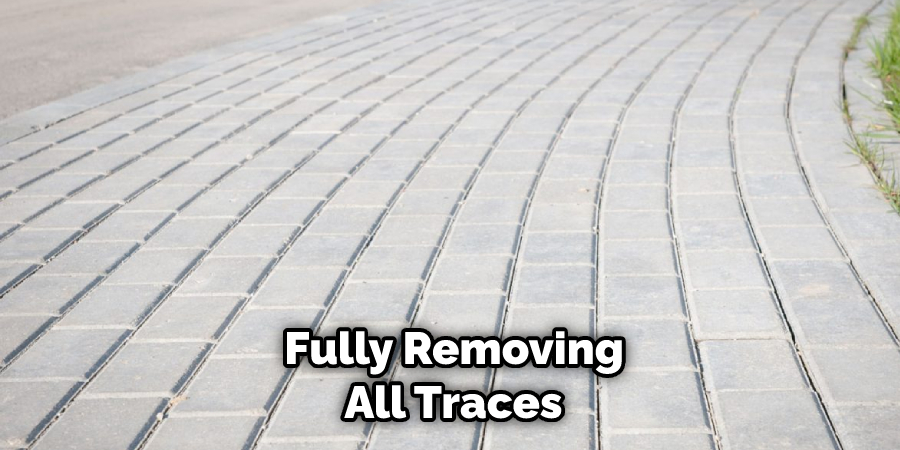
Conclusion
Removing polymeric sand haze from pavers can be a nightmare, but with a few simple steps, it can be done quickly and easily. Remember to avoid power washing the pavers at all costs, as this will only worsen the situation. Be sure also to use proper protective gear when working with acids or other hazardous materials to remove the sand haze.
With patience and dedication, you’ll be able to get your pavers back to looking like new again without having to replace them. After that, you’ll need to seal your old pavers if that wasn’t done before or apply a refreshment coat if they were previously sealed. That way, your newly cleaned pavers are ready for many years of worry-free use!
Hopefully, the article on how to remove polymeric sand haze from pavers has been helpful in providing you with some insight into how to properly and safely remove the haze from your pavers. Good luck and happy cleaning!
You Can Check It Out to Remove Moss from Patio Pavers

